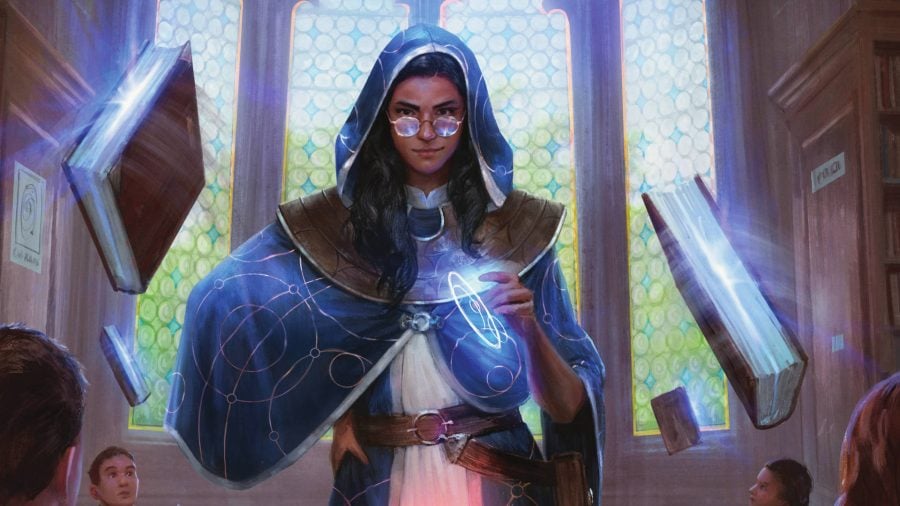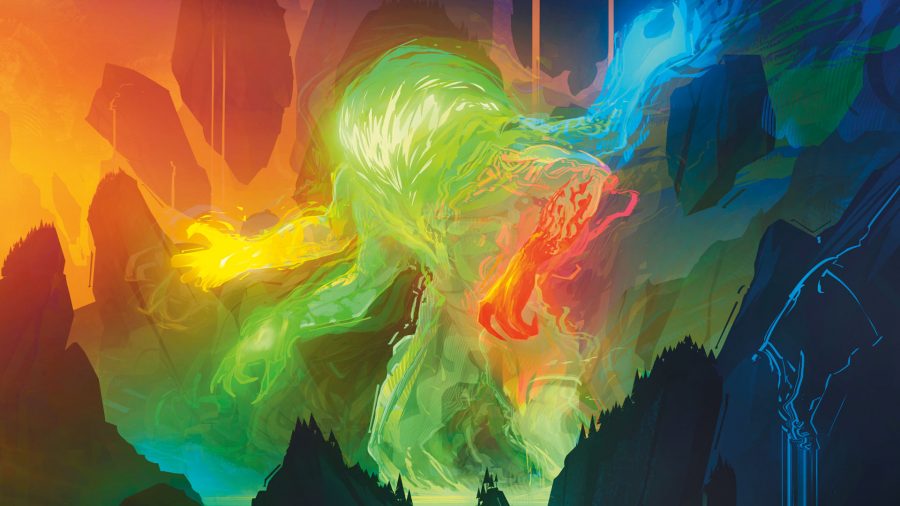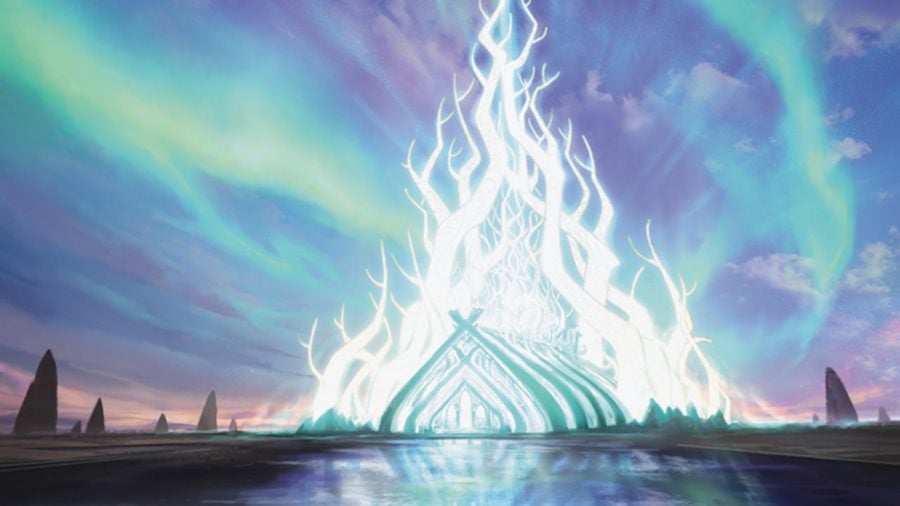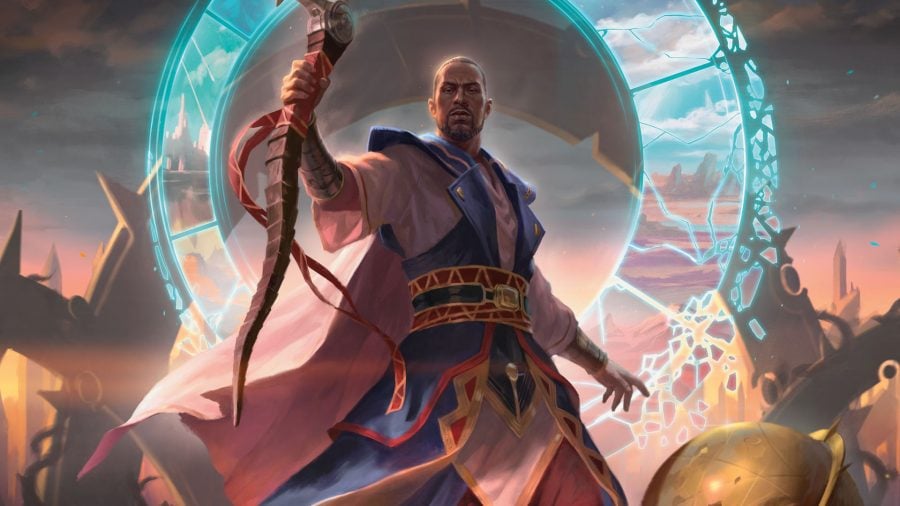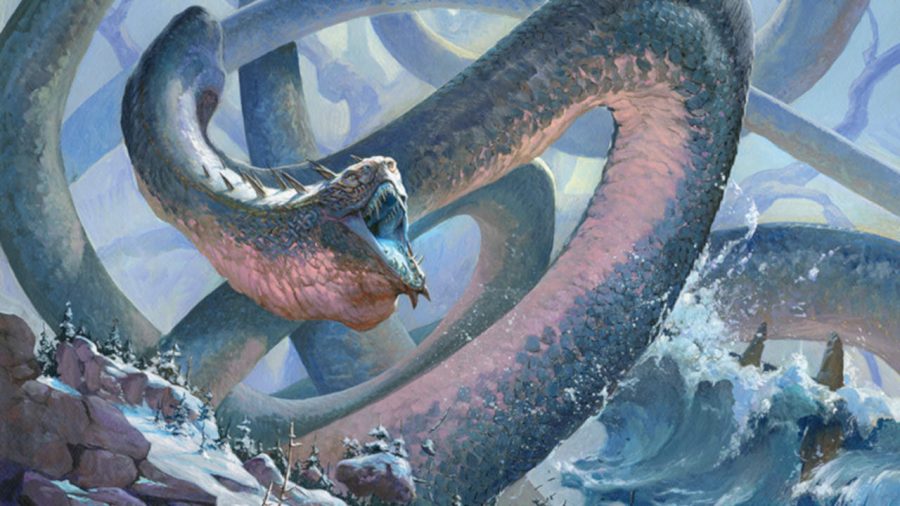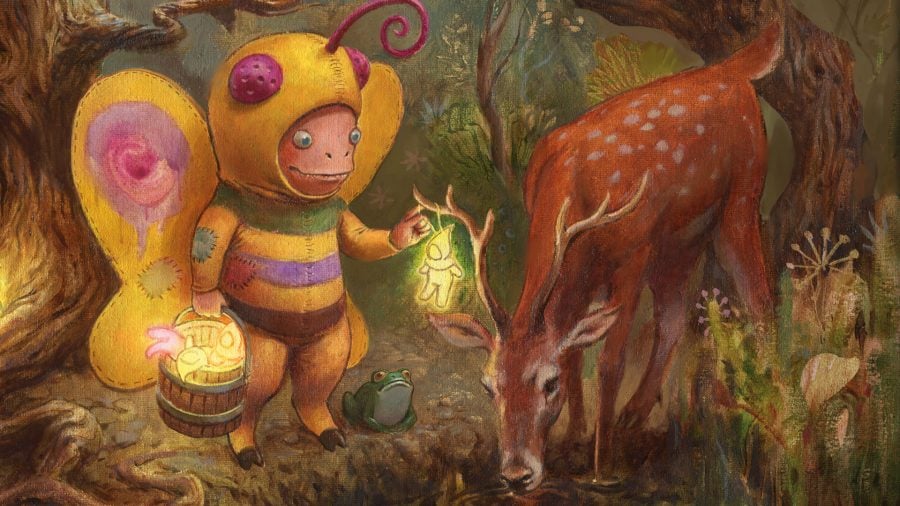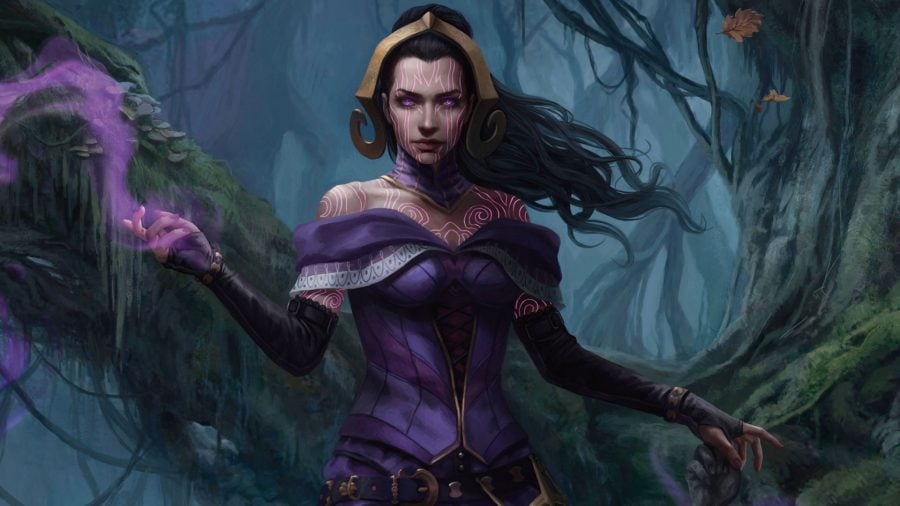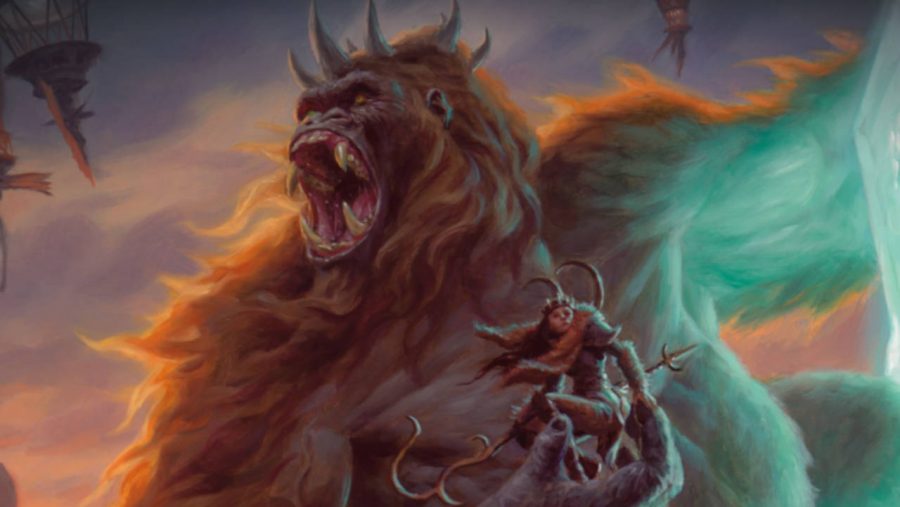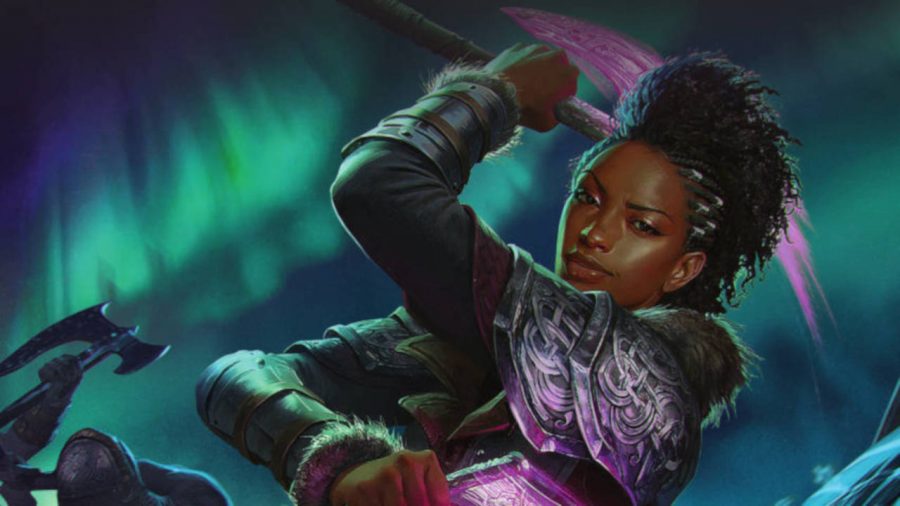Looking to build a Magic: The Gathering deck? You’ve made a great decision. There’s little else more rewarding than crafting your strategy, picking the right cards, and finely tuning the nuances of your deck to bring swift defeat to all who challenge you. Magic is trading card game royalty for a reason.
We’ve written this guide mainly thinking of new players, just recently enamoured by the arcane power of Planeswalkers, but even for an experienced duelist who knows their enchantments and artifacts like the back of their hand, there’s never any harm in a quick ‘how to build a deck‘ refresher. In either case, read on and we’ll walk you through the basics.
Don’t be intimidated by the challenge in front of you, building a Magic deck can be boiled down to a straightforward and enjoyable process. Rather than a dry exercise of instruction-reading and rule-following, you can turn your deck-building into an opportunity for experimentation and discovery – finding what works for you and what doesn’t, while expanding your knowledge of the game along the way.
This guide collates some basic tips that any wannabe deck-builder should follow, and provides a firm grounding from which to make all the important card decisions. Once you’ve digested the fundamentals, have a go at putting a deck together yourself. The more practice you have at this process, the more adept you’ll become and – hopefully – the more wins you’ll be able to rack up!
This is how you build a Magic: The Gathering deck:
The Basics: what’s in a MTG deck?
Let’s get the preliminaries out of the way. When building a Magic: The Gathering deck you’ll be dealing with two basic building blocks: Land cards, and everything else. Land cards are the energy source of your deck, generating the in-game ‘mana’ that powers everything you do. The ‘everything else,’ is, well, all other cards – Creatures, Instants, Sorceries, Enchantments, Artifacts and Planeswalkers – that require mana to play and, in a multitude of ways, help you deal enough damage to your enemy to win the game. Simple stuff.
Land cards are the energy source of your deck
Alongside what goes into your deck, you’ll also need to keep an eye on how many cards you’ve assembled. In competitive play, Magic: The Gathering deck ‘formats’ are used to regulate what can and cannot be included in a deck. ‘Constructed’ decks must contain at least 60 cards, while ‘Limited’ decks have a lower minimum of only 40. There are multiple formats within these groups, but you only need to know the one that you and your friends are planning to play. If you’re not playing competitively but purely for fun with some mates, pick whatever format takes your fancy, or start off with ‘Standard’, recommended for beginners for its relatively low cost-barrier of entry.
Watch out for future guides in which we’ll zoom in further, with details on how to build great decks for each of Magic’s various formats.
With these basics cleared up, let’s take a gander at the strategic particulars of your new deck.
Pick a playstyle for your MTG deck
How do you hope to use your deck? Be careful not to waft away this consideration as lofty nonsense. Establishing the purpose of your deck – what mechanics, rules, card types and combinations it will use to deliver victory – will focus your deck-building and influence how you play the game.
New beginnings: How to play Dungeons & Dragons’ starter set
Perhaps you’re chasing a defensive build that relies on reactive attacks and heavy resource-use to gain the edge? Maybe you’re keen to control the rhythm of play and obtain board presence faster than your opponent, to rush a victory? What kind of Creatures take your interest – hulking high-cost beasties to trample the late game, or an aggressive, fast-moving horde of small soldiers?
If you’d rather nail opponents with pure magic, will you ensnare them with layered Enchantments or burn them down with fusillades of damage-dealing Instants and Sorceries? Could you make canny use of Planeswalkers – and if so, are you counting on them to distract your enemy, deal damage or merely provide support to your front-line Creatures?
Having an inkling of how your deck will win is essential
Whoa, that’s a lot of questions to answer! If your immediate reaction is one of befuddlement or pure terror, don’t worry. Knowing precise answers to these questions isn’t necessary right away – but having an inkling of your plan for winning the game is an essential prelude to assembling cards.
Consider your existing style of play, or that of your friends. What sort of playstyle do they use? Does it look like fun? Do you fancy having a crack? Build a deck which you both understand and enjoy playing – and don’t skimp on the latter, it’s the most important factor.
Pick a mana colour
Now you know what’s in a Magic: The Gathering deck and have some idea of what playstyle your deck is chasing, surely it’s time to start picking cards? Whoa there, hold your horses. First, choose a card colour, or colours, from which to build your deck.
There are five – white, blue, black, red, and green – each representing a different flavour of mana with its own associated library of cards attached – Lands, Creatures, Instants and the rest.
Build a profile: Check out our D&D classes guide
However, these colour options don’t merely provide an aesthetic variety – oh no. Colours are fundamental to the game’s operation: you can’t play a card unless you pay its cost in mana of the specified colour. Don’t have enough green-mana-producing Forest cards on the board? Then that nasty-looking giant spider that’s burning a hole in your hand ain’t comin’ out to play.
It’s not just about managing resources, either; each colour also maps onto a distinct, thematic playstyle that uses its own balance of mechanics and card types to build a directed fighting force.
Red represents fiery magic, frenzied and raging, and suits aggressive playstyles that focus on quick damage-dealing through persistent, solid attacks. Green, meanwhile, is the magic of life and natural growth, supporting a slow, plodding playstyle that relies on the brute strength of a few powerful units to buckle opponents under their sheer weight.
If you already decided on a playstyle for your deck, picking a colour shouldn’t be too difficult. Find the mana colour that compliments, or directly aligns with, the style you’re pursuing.
It’s best to stick to cards of one colour for your first few decks
As a beginner, it’s simplest to only include cards of a single colour (known as being mono-colour) for your first few decks. Even competitive players tend to limit themselves to two or three. Keeping it simple will streamline the deck’s playstyle and improve your chances of always being able to play something on any given turn. You’d hate to have multiple lands on the table, but too few of any one colour to cast anything from your hand.
However, adding an additional colour or two to your deck broadens its scope, providing a wider range of cards to access. Don’t think too wildly, though. When combining colours, think how the different colour themes will complement, not scupper, one another.
Pick the land cards
Lands are the building blocks of any deck. Their mana fuels your units and is relied upon to cast units to the table. But there’s a fine nuance to managing Land cards. Don’t go cramming them into your deck haphazardly, or your hand-draws will be overflowing with mana sources at the expense of other key cards – and what good will an additional land do you when the enemy is pounding your final defences and rapidly depleting your life?
Include too few lands, however, and your mana base will be too weak, leaving you paralysed, unable to cast any spells as your opponent builds a lead that you’ll struggle to recoup.
A stable supply of lands will build your mana pool
Choosing how many land cards to include is a fine science, often navigated through a healthy dollop of guesswork. A tried and tested benchmark is to have lands make up around 40% of your deck – about 25 cards for a 60-card deck, and around 18 for a 40-card. This helps ensure a stable supply of lands throughout a game to build your mana pool, while avoiding any fallow fields in the early game or an unwelcome glut of surplus Swamps, Mountains or Islands later on.
When building a Magic deck, you may be tempted to cut down on Land cards. After all, they just sit there, soaking up table space while providing an immaterial magical life force. The real action lies with the deadly Creatures or devious spell cards you’re just dying to show off in combat.
But be wary of sacrificing too much Land for other things. Undercutting your mana base will wreak havoc on the effectiveness of your deck, and it won’t matter how impressive that snazzy Legendary Creature is if it never leaves your hand.
Pick the main cards
As with land cards, spend some time thinking about what Creatures, Instants, Sorceries, Enchantments and Artifacts to include in your deck. If you’ve already selected a mana colour, have a playstyle in mind, and settled on a rough number of land cards, this shouldn’t be too taxing.
Choose cards with complementary abilities that aid the direction of your deck. If you’re looking to play aggressive, prioritise Creatures with low mana costs. If you’re keen to dominate the playing field with a control strategy, be sure to include lots of removal cards to cleanse the board of enemy Creatures, and dispels to stymie their magic.
A touch of class: Read our Pathfinder classes guide
In almost all game formats, players are allowed no more than four copies of any one card (barring Lands) in their deck. Does this mean you need four of each card? Nope. Consider the importance of each card. If you’re reliant on it, then stick three or four copies in to get a good strong chance of drawing one early. But if you know you can win without seeing it in play, fewer copies are needed.
Pay additional attention to the mana cost of your cards. Concentrating solely on high-cost cards will have you waiting all game to acquire enough lands before you can deploy that one big, devastating play, running the risk that a speedier, more aggressive opponent could kill you off before you can pull the trigger.
By the same token, including only low-cost cards can allow you unquestioned board control early on, but if you fail to end your enemy while you have the chance, you may end up pinned down and under-powered, unable to break your opponent’s pumped-up late-game defences.
Such ‘slow’ and ‘fast’ decks can both still be viable – but more often you’ll see something of a balance between the two. This is known as managing your ‘mana curve’ – the distribution of mana costs among cards in your deck. Settle on a distribution that supports your playstyle and allows you to play increasingly high-cost creatures and spells as the game progresses.
Choose a mana curve that supports your playstyle
As a good rule of thumb, most decks chase a fairly even mana curve, covering the full range of card costs, but with a concentration of three- or four-cost cards. You’ll want to play a card every turn, and this distribution helps prevent a glut of high- or low-cost cards coming to you at an inopportune time.
Of course, this rule isn’t set in stone. Get creative, test new ideas, and see which mana curve works for you. As with most things in Magic: The Gathering, when building a deck, the best thing to do is to put your efforts through an acid test on the tabletop.
Get creative and have fun
So now you’ve built a fully functioning deck. You’ve decided on a playstyle, picked a mana colour, collected your Land cards, and assembled the key cards that’ll do your dirty work on the battlefield. Go forth and conquer! But the journey doesn’t end here. Tweak your deck if you find it’s not quite working.
A bit gloomy: Read our beginner’s guide to Gloomhaven
Maybe you need to plug in a few more Land cards to increase the available mana pool? Perhaps your mana curve was miscalculated? Substitute new cards and try new tactics – they might surprise you.
Regardless, the most important thing to keep in mind when building a Magic: The Gathering deck is your enjoyment of the game. Make sure you’re having fun building it, and you’ll probably have fun playing it.
Source: Wargamer




